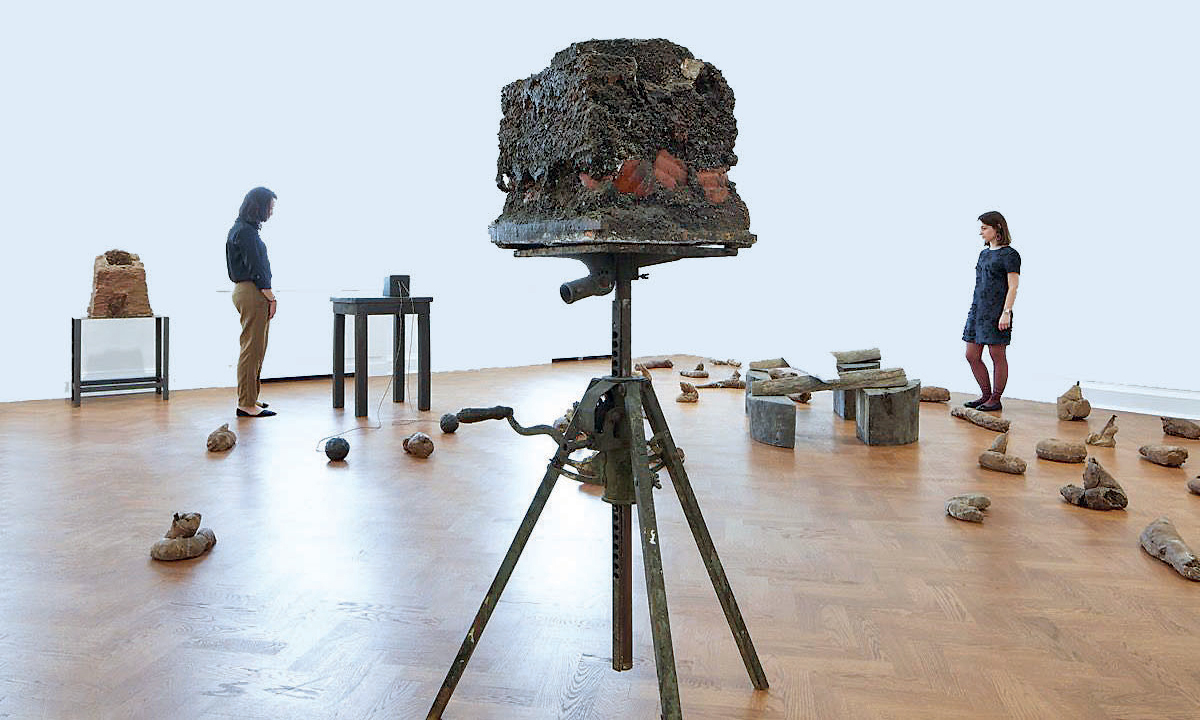

With his felt hat, fat-smeared exhibition space sand the legendary declaration that “everyone is an artist,” Joseph Beuys embodied modern art of the post-war 20th century like few others.
On May 12 this year, the charismatic performance artist and sculptor would have turned 100. He died in January 1986 of a lung infection in Dusseldorf.
Twenty museums and institutes in his home state of North-Rhine Westphalia, western Germany, plan to pay tribute to Beuys this year, on top of events and exhibitions set to take place in Berlin, Stuttgart, Darmstadt and Vienna.
The centenary year is scheduled to launch in early March, provided the programme doesn’t fall victim to the coronavirus pandemic like so many other cultural events.
Presenting the life and work of Beuys in an exhibition is already challenging enough. He was known for using fat and felt to create art, but his legacy extends well beyond gallery spaces: Beuys was a social commentator and activist, a professor, a co-founder of Germany’s Green Party, a self-styled shaman and a media sensation.
These days, gallery visitors confronted with Beuys’ work in art galleries see school blackboards covered in writing, mighty basalt stones embedded with felt, huge blocks of tallow and display cases containing ritualistic objects as if for a journey into the afterlife.
The works are difficult to decipher, for they are often mere remnants of Beuys’ spectacular actions. Without their creator, they simply leave the viewer to contemplate in silence.
The K20 modern art museum, located in the city of Dusseldorf, is therefore looking for other ways to remember him.
The exhibition “Everyone is an Artist: Cosmopolitical Exercises with Joseph Beuys” is scheduled to open there on March 27.
“We hope that everything goes according to plan despite the coronavirus,” director Susanne Gaensheimer says. Her museum, like all cultural attractions in Germany, is currently closed under a lockdown to curb case numbers.
The exhibition focuses solely on Beuys’ actions and performances, presented in films and photographs, Gaensheimer says. This allows the German artist to be shown in dialogue with his contemporaries from across the world, including those from non-Western countries.
Gaensheimer doesn’t want to show the large-scale pack of sledges, layered piles of felt or the 1,000-kilogram bronze sculptures already displayed at a retrospective in Dusseldorf 10 years ago.
She considers such works to be relicts of things that Beuys did in museums himself. “If we reconstruct such installations in exhibitions, how much of the living energy of Beuys can we carry over?” she says.
Even the grand opening of the Beuys centenary year is intended as artistic performance: 24 women and men are to play the music of Erik Satie for 24 hours to launch the K20 show - in reference to Beuys’ interest in the French composer, as well as his “24-Hour Happening “in Wuppertal in 1965.
The programme stretches into 2022. Other exhibitions in the state of North-Rhine Westphalia include a show of Beuys’ key works in the Bundeskunsthalle in Bonn, a major collection of his early works focusing on shamanism in the moated Moyland Castle, and an exhibit exploring his sociopolitical impact in Essen’s Ruhr Museum.
A special radio station is also in the offing, which will broadcast theatre and other performances and an orchestral work by composer Heiner Goebbels. — dpa
Oman Observer is now on the WhatsApp channel. Click here



